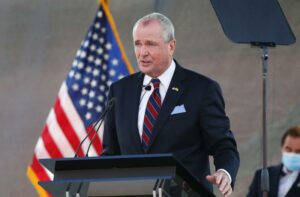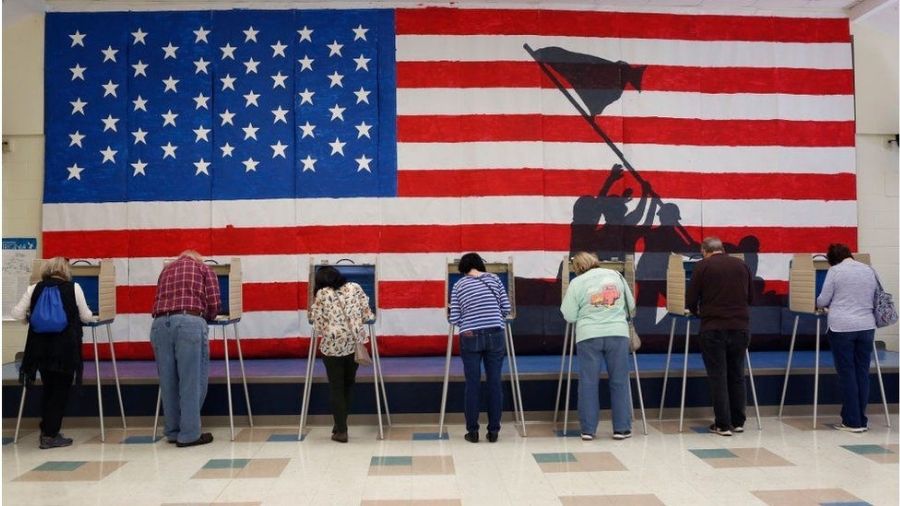A governor is, in most cases, a public official with the power to govern the executive branch of a non-sovereign or sub-national level of government, ranking under the head of state. In federations, the governor may be the title of a politician who governs a constituent state. He may be either appointed or elected. The election of the governor is referred to as the gubernatorial election.
The 2021 gubernatorial were held yesterday and the Results are out. You can check the live results below
– Check New Jersey Live Election Results
– Check Virginia Live Election Results
The 2021 US gubernatorial elections will be held on November 2, 2021. They will be held in two states, New Jersey and Virginia respectively. A recall election was held in California, on September 14. These elections form part of the 2021 United States elections. The last gubernatorial elections for New Jersey and Virginia were in 2017. The last regular gubernatorial election for California was in 2018. All three seats are currently held by Democrats.
Incumbent Virginia Governor Ralph Northam is term-limited, while New Jersey Governor Phil Murphy is running for re-election. Additionally, an unsuccessful special election for whether to recall California Governor Gavin Newsom was held on September 14, 2021. More states may hold elections due to a gubernatorial vacancy (depending on a states’ constitution) or recall of a governor.
California

Governor Gavin Newsom was elected in 2018 with 61.9% of the vote. In 2020 and 2021, a recall petition gained momentum due to the COVID-19 pandemic in California and Newsom’s responses, eventually triggering a recall election. Newsom was ineligible to run as a candidate for the second question. The ballot featured two questions,
- whether to recall Newsom?
- who would replace him if he is recalled?
Among the most prominent Republicans in the race included 2018 Republican nominee John H. Cox, former San Diego mayor Kevin Faulconer, media personalities Caitlyn Jenner and Larry Elder, in addition to former U.S. representative Doug Ose.
A large number of candidates announced their intention to replace Newsom. The recall failed, and thus Newsom will remain in office for the rest of his term.
New Jersey

Governor Phil Murphy was elected in 2017 with 56% of the vote. He is running for re-election to a second term and was unopposed in the Democratic primary.
Republican Jack Ciattarelli was the earliest to announce his candidacy for the governorship in February 2018. He was followed by New Jersey Republican Party Chairman Doug Steinhardt, who announced his campaign in December 2020 and withdrew his candidacy the next month. Pastor Phil Rizzo and businessman Hirsh Singh ran for the nomination. Ciatarelli won the Republican primary.
The Libertarian Party announced activist Gregg Mele as their nominee in March. The Green Party nominated their candidate Madelyn Hoffman at a convention in April. Other minor candidates include Socialist Workers Party nominee Joanne Kuniansky and perennial candidate Ed Forchion of the Legalize Marijuana Party who is running as a write-in after challenges to signatures from the Murphy campaign.
Virginia

Governor Ralph Northam was elected in 2017 with 53.9% of the vote. He will be term-limited in 2021. This is because the Virginia Constitution does not allow governors to serve consecutive terms.
Lieutenant Governor Justin Fairfax, former governor of Virginia Terry McAuliffe, state senator Jennifer McClellan, state delegate Jennifer Carroll Foy, and state delegate Lee Carter announced their candidacies for the Democratic nomination for the governorship. Virginia attorney general Mark Herring previously announced his intention to run for the governorship but withdrew from the race to seek reelection as attorney general. McAuliffe won the Democratic primary by a wide margin despite the large field of candidates.
State senator Amanda Chase announced her candidacy for the Republican nomination for the governorship in February 2020. After initially indicating a brief attempt at an independent run because of the state Republicans’ decision to hold a convention instead of a primary, Chase later returned to seek her party’s nomination once more. Kirk Cox, the former Republican speaker of the Virginia House of Delegates, filed the paperwork to run for the governorship in September 2020. Businessman Glenn Youngkin won the Republican nomination after six rounds of voting at the convention.
Princess Blanding, a teacher and sister of the late Marcus-David Peters, is the newly-founded Liberation Party’s gubernatorial candidate.
Steps to register for Gubernatorial Elections
Article II, Section 1, Clause 2 of the United States Constitution directs each state to appoint a number of electors equal to that state’s congressional delegation (members of the House of Representatives plus two Senators). The same clause empowers each state legislature to determine the manner by which that state’s electors are chosen but prohibits federal officeholders from being named electors. Following the national presidential election day on the first Tuesday after the first Monday in November, each state, and the federal district select its electors according to its laws. After a popular election, the states identify and record their appointed electors in a Certificate of Ascertainment, those appointed electors then meet in their respective jurisdictions and produce a Certificate of Vote, for their candidate.
In 48 of the 50 states, state laws mandate the winner of the plurality of its statewide popular vote shall receive all of that state’s electors. In Maine and Nebraska, two electors are assigned in this manner. The remaining electors are allocated based on the plurality of votes in each of their congressional districts. The federal district, Washington, D.C., allocates its 3 electoral votes to the winner of its single district election. States generally require electors to pledge to vote for that state’s winning ticket; to avoid faithless electors, most states have adopted various laws to enforce the electors’ pledge.
The electors of each state meet in their respective state capitals on the first Monday after the second Wednesday of December to cast their votes. The results are sent to and counted by the Congress, where they are tabulated in the first week of January before a joint meeting of the Senate and the House of Representatives, presided over by the current vice president, as president of the Senate. Should a majority of votes not be cast for a candidate, a contingent election takes place: the House, holds a presidential election session, where one vote is cast by each of the fifty states; the Senate is responsible for electing the vice president, with each senator having one vote.
Way forward
Since 1964, there have been 538 electors. States select 535 of the electors, this number matches the aggregate total of their congressional delegations. The additional three electors come from the Twenty-third Amendment, ratified in 1961, providing that the district established pursuant to Article I, Section 8, Clause 17 as the seat of the federal government (namely, Washington, D.C.) is entitled to the same number of electors as the least populous state. U.S. territories have never been entitled to any electors in the Electoral College.
Also read:
Table of Contents







Add Comment